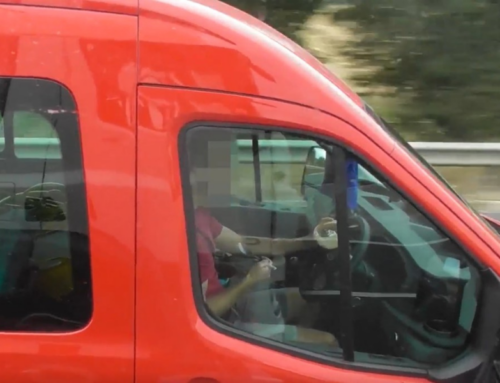Achieving Safety Buy-in, Part 3: Follow Through
Once our policies, messaging and training are all in place, and everyone knows what they should be doing in order to lower road risk, it is very important that organisations follow through.
Embedding a culture of managing road risk
What does this mean in practice? Here are our pointers:
- Living your values, from top to bottom. There is no point telling drivers not to use mobile phones if the MD is seen driving while checking his notifications.
- Enforcing policies and protocols. Line mangers must be trained and empowered to coach – or, if necessary, discipline – drivers who break safety rules. This can be challenging if line managers are more concerned with having a full roster of mobile staff than the safety implications of a broken rule. Make sure that productivity targets are not put ahead of safety targets.
- Recognising and rewarding success. Positive reinforcement is a key factor in changing behaviour.
Why is follow through so important to success?
Policies quickly become nothing more than meaningless paper if they are not universal and enforced. If anyone is allowed to flout a rule, it quickly becomes devalued and disregarded.
Risk-taking is also habitual. Every time a driver takes a risk and nothing adverse happens either in terms of collision, or some kind of enforcement intervention, they experience a sense that the risk ‘paid off’. They achieved a marginal gain, whether the perception that they got somewhere faster, or did their work more easily, with no loss. In psychological terms, they have been rewarded for their risk-taking.
Our brains are geared towards efficiency. If we believe something is quicker or easier, we are likely to do it more often, and our brain will actually programme itself to see this behaviour as normal and, eventually, reflexive.
It’s very important, therefore, that we discourage risky behaviours on every occasion.
The reverse is also true. Whenever drivers perform well, drive safely or improve in any way, this should initially be recognised and rewarded. Behavioural science has known for a long time that rewards are a key motivator.
Nothing motivates like success. If someone believes they are good at something, it becomes part of their sense of identity, and their pride in doing it well becomes self-reinforcing.
Managing Drivers – Motivation and gamification
Behavioural models show us that the brain seeks pleasure and avoids pain. We prefer being praised to being chastised. We prefer being given a prize to being given a penalty notice.
However, if we do the same thing every day and receive the same reward every day – whether a positive word, a voucher, or a pay check – motivation wanes.
This is because our motivation comes from the dopamine system. Dopamine is a feel-good brain hormone which makes us excited and keen to perform. It’s what we feel at the start of a competitive match, or in the face of a welcome challenge.
Dopamine is the reason that the journey is better than the destination. Watch any great achiever and the moment they achieve one goal, they set another. That’s because they enjoy the dopamine hit of striving more than they enjoy the serotonin – another feel-good hormone – which the brain produces when we are satisfied and content.
Many companies use gamification – competition or play-as-learning – in order to motivate team members to strive or to improve.
Some drivers will enjoy competing against themselves, comparing today’s score with yesterday’s. Others will enjoy competing against team mates. We need to keep this in mind, because not everyone will find constantly being in the middle of a league table, always overshadowed by the team ‘stars’, motivating.
One interesting fact about dopamine and motivation is that the human brain initially enjoys rapid reinforcement – ie relatively plentiful and rapid rewards – when we first start learning or changing behaviour. Imagine for a moment how motivating beginner’s luck is, or how very unmotivating it can be to try a new skill and spend weeks struggling to make any progress.
However, if we start to progress, randomised reinforcement becomes more likely to motivate than steady predictable reinforcement. As we said earlier, if we do the same thing every day and get the same result, we quickly get bored and the reward becomes devalued. If we don’t know when the reward will come, it becomes more engaging. This is the ‘slot machine principle’ – random pay outs are more addictive than predictable small wins.
No progression is regression
Another key factor for motivation and continued performance is progression. Keep raising standards. Keep resetting targets. People perform best when they have something to aspire to – the dopamine factor again.
If we do not progress, and simply keep working at the same level, gradually performance falls away.
Upskill drivers, and keep your organisation striving for continuous improvement. It’s the surest way to keep everyone working at their best and making road safety a top priority every day.






